House prices are on track to continue rising across the country as interest rates fall and supply continues to remain tight.
As voters head to the ballot box prepared to cast votes on the issue of housing affordability, data from Cotality (formerly CoreLogic) shows that house prices trended higher in April.
Its national Home Value Index recorded a third straight month of growth in April, with dwelling values up 0.3 per cent to reach a new record high.
This rise in values added about $2,720 to the median value of an Australian dwelling over the month.
Nationally, the median value is now standing at $825,349, according to Cotality.
Sydney maintains the highest median value at $1,194,709, while Darwin has the lowest at $526,410.
The monthly lift in home values was recorded across every capital city, with gains highest in Darwin (up 1.1 per cent in the month of April).
However, the annual pace of gains slowed to 3.2 per cent nationally in April, the slowest annual rise since the 12 months ending August 2023.
Over the year, all states except Melbourne and Canberra recorded gains.
Melbourne’s values fell 2.2 per cent over the year, while Canberra saw a slight 0.6 per cent drop.
Conversely, Perth saw the highest annual gain, lifting 10 per cent.
Cotality’s head of research, Eliza Owen, says house prices have stayed strong are expected to trend higher in the coming months.
“When you weigh up all of the headwinds and tailwinds for the housing market, I think ultimately, we’re still looking at price rises over the course of the year, with lower interest rates being the main tailwind,”
Ms Owen said.
“However, it’s going to be hampered by economic uncertainty and what that could do to the labour market. It’s an evolving picture, but ultimately, I think we’re looking at a more modest growth rate for 2025.”
Cotality’s data was in line with the PropTrack Home Price Index, which found national home prices hit a new peak in April, but growth has slowed compared to the start of 2025.
The report found that national home prices lifted 0.2 per cent over the month, and 3.7 per cent year-on-year in April 2025.
Auction clearance rates and new listings slow down
A slight slowdown in buying and selling over the Easter break was evident in weekly auction numbers, which dropped to 644 auctions scheduled for the week of April 20 across the combined capitals.
Cotality says outside of the initial COVID impact in 2020, this is the lowest Easter auction week since 2019, when the housing market was nearing a cyclical trough, and a federal election was dominated by conversations of housing policy reform.
It found the flow of new listings also dropped off substantially, with new listings for sale across the combined capitals falling to 19,650 in the four weeks to April 27.
Much like with the auction numbers, this is the lowest number of new listings for this time of year since 2019 (outside of COVID impacts in 2020).
Ms Owen said during the period measured “there was so much going on between tariff announcements, the federal election, the extended public holiday period”.
“Ultimately, what we saw from the housing market is that strong lending conditions and people being able to service their mortgage empowered them to stay back from buying and selling, and that’s why in times of uncertainty, you get lower transaction activity.”
There was a slight slowdown in buying and selling over the Easter break.
Houses continue to outpace units, rents continue to rise
Growth in house values is continuing to outpace the unit sector.
Cotality noted the past three months have seen the value of houses rise by 1.1 per cent across the combined capitals, more than double the 0.5 per cent rise recorded across the unit sector.
It found this trend was mostly being driven by Sydney, where house values were up 1.4 per cent over the rolling quarter compared with a 0.3 per cent fall in unit values over the same period.
Hobart had the largest disparity between house and unit growth in the period, with houses rising 1.4 per cent against a 1.1 per cent fall in units.
Regional housing values have continued to outpace the capitals, with values up 0.6 per cent and 0.2 per cent respectively over the month of April.
Rental growth also firmed, with the national rental index rising by 0.6 per cent over the quarter.
But Cotality said that adjusting for seasonality, the pace of growth is milder, with rents rising 0.4 per cent nationally in April.
Over the year, the pace of rental growth has more than halved, from 8.3 per cent over the 12 months to April 2024, to 3.6 per cent over the most recent 12-month period.
Eliza Owen says the slowdown in rents is “a good sign for renters, and it’s well down from the eight to 10 per cent increases we’d seen in 202, 2022 and 2023”.
“It all points to this picture of annual rent growth continuing to slow, and rent values stabilising, albeit at very high levels,”
Ms Owen said.


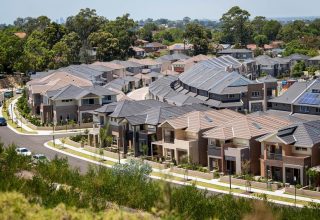


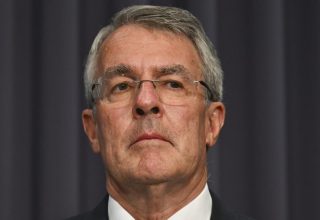
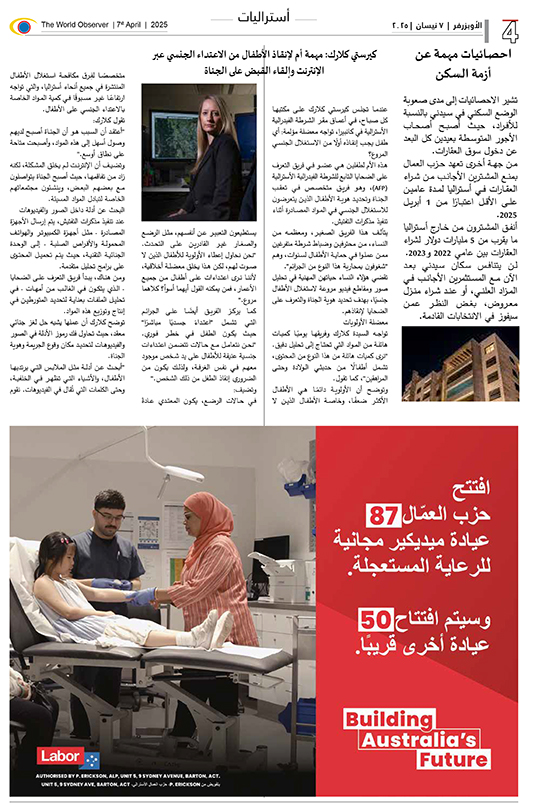
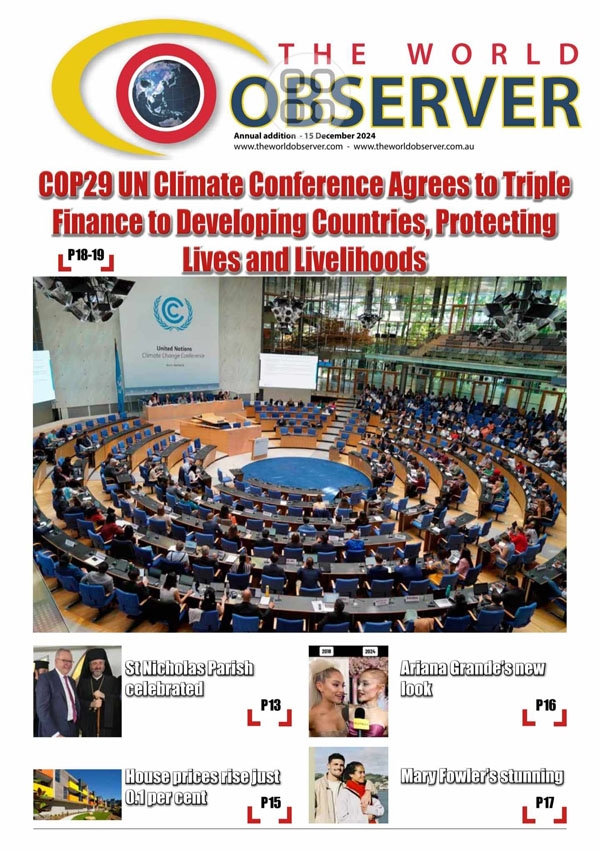
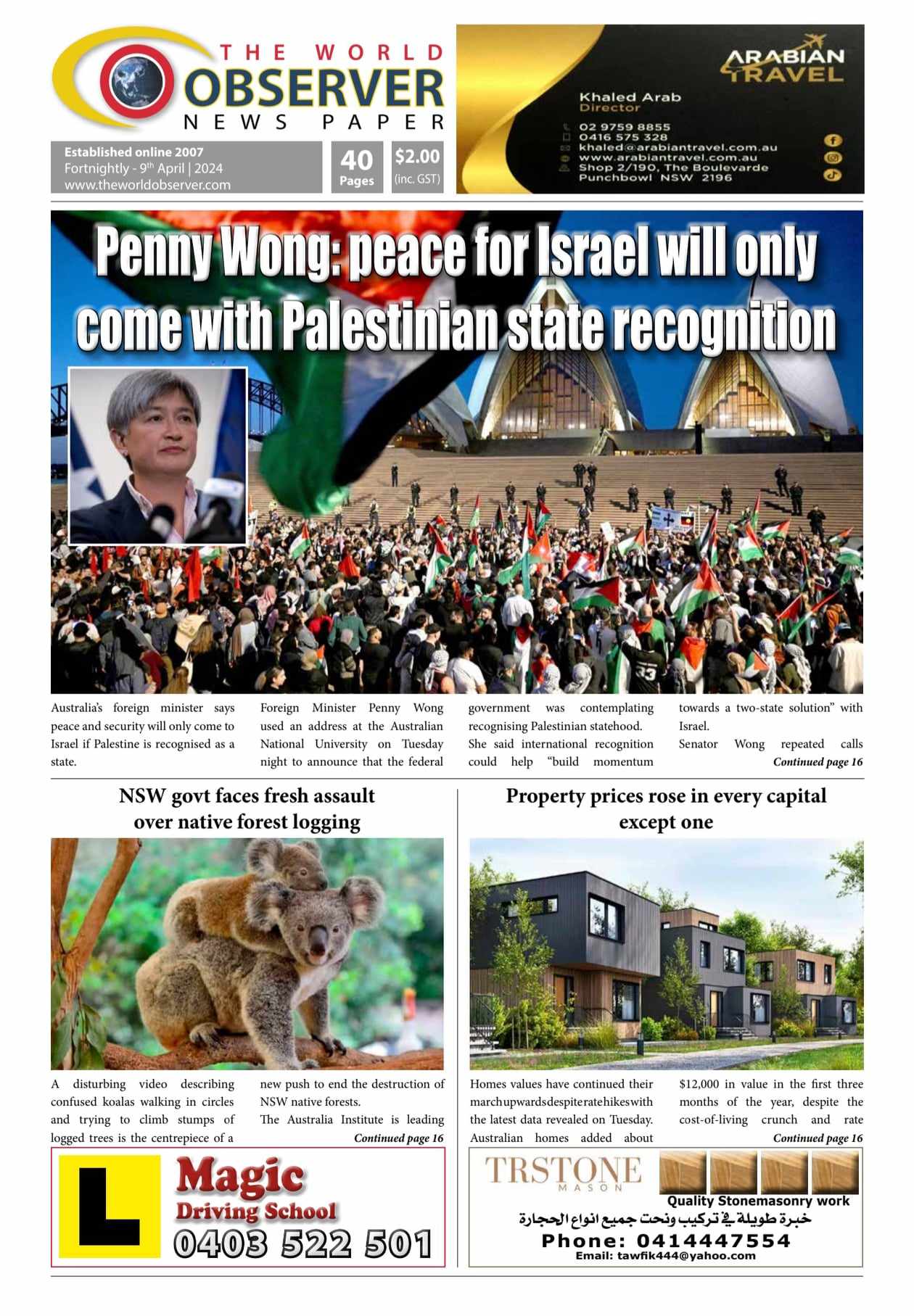





























 The World Observer Media produces a daily online newspaper, a daily Arabic online newspaper and a monthly printed Arabic/English magazine and a weekly printed Arabic/English newspaper.
The World Observer Media’s mission is to entertain and educate all generation from the Ethnic Communities in Australia, who are interested in local, national and foreign information.
The World Observer Media produces a daily online newspaper, a daily Arabic online newspaper and a monthly printed Arabic/English magazine and a weekly printed Arabic/English newspaper.
The World Observer Media’s mission is to entertain and educate all generation from the Ethnic Communities in Australia, who are interested in local, national and foreign information. 


